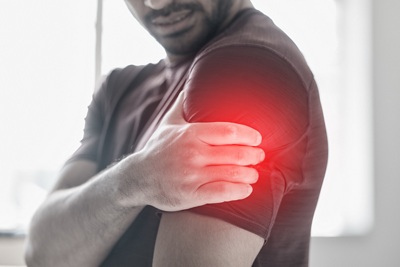Post-exercise muscle soreness is common, but with the right preparation and recovery, you can enjoy the health benefits of an active life, explains a Mediclinic expert.
It’s indisputable that exercise is a vital part of promoting health and wellbeing. With rates of lifestyle-related diseases on the rise, such as hypertension, diabetes, depression, and cancers, exercise plays a key role in reducing the burden of these illnesses, says Dr Lervasen Pillay, a GP with a special interest in sports and exercise medicine at Mediclinic Morningside.
“In fact, exercise can be medicine if properly done and professionally prescribed,” Dr Pillay adds. Prescribed exercise, he says, has been shown to:
- Reduce blood pressure
- Improve glucose control
- Reduce cancer risk, e.g., prostate and colon
- Improve anxiety and depression symptoms
- Improve cancer treatment response and lower recurrence risks.
Why do muscles hurt after exercise?
Despite its benefits, exercise can result in post-workout pain. “Muscle soreness may occur after an exercise bout but more often after performing excessive exercises or routines your muscles are not familiar with,” explains Dr Pillay. “This is often referred to as delayed-onset muscle soreness (DOMS).”
The type of muscle soreness you experience and the time it takes to strike after you complete your activity varies according to the nature and intensity of the exercise. “For example, runners will often experience muscle soreness immediately after stopping whereas someone doing resistance training may experience peak muscle soreness 48 to 72 hours later.”
Although researchers and clinicians have yet to identify the exact mechanisms that lead to post-exercise muscle soreness, various hypotheses exist. These include build-up of lactic acid, muscle or connective tissue damage, and enzyme release, says Dr Pillay. “However, there is consensus that muscle cells get damaged, causing leaking of protein. This in turn causes inflammation, resulting in pain. Yet, as the muscle starts to repair itself, the healed tissue then becomes more prepared for that exercise.”
Preventing muscle discomfort
Without adequate preparation, you run the risk of muscle soreness, fatigue and damage. “The human body requires the correct fuel to functional optimally during exercise,” Dr Pillay explains. “The metabolic processes for muscles, nerve and the brain to perform these activities require enough water, micronutrients, carbohydrates and protein. This allows for better functioning and muscle recovery. These are the ‘building blocks’ available in the body for optimal repair after each exercise session so your muscles are better prepared for future exercise.”
While warming up and cooling down may not necessarily prevent muscle soreness after doing new or unfamiliar exercise routines, the risk may be reduced, as the muscle and nerves are more prepared to be loaded, adds Dr Pillay.
Dr Pillay’s 4 tips for muscle recovery after exercise
- Active recovery: After a strenuous bike session, for example, don’t just stop riding, walk off and sit down. It’s best to first slow down the cycling to a very low intensity for two or three minutes to allow muscles to recover.
- Hydration: During and after your exercise session, hydrate with a combination of water and electrolytes to maintain optimal muscle cell function.
- Nutrition: Depending on the type and intensity of your exercise, consume appropriate amounts of carbohydrates and protein before you exercise and replenish them post-exercise, e.g., by drinking chocolate milk soon after the end of your session.
- New techniques: Recent reviews of research have shown there may be benefit in using massage therapy and compression garments. Although popular, the use of cryotherapy, e.g., cold water immersion, or contrasts baths – alternating hot- and cold-water immersion – lack scientific evidence.
To find a sports medicine specialist near you, go to www.mediclinic.co.za
Further publications on the topic


